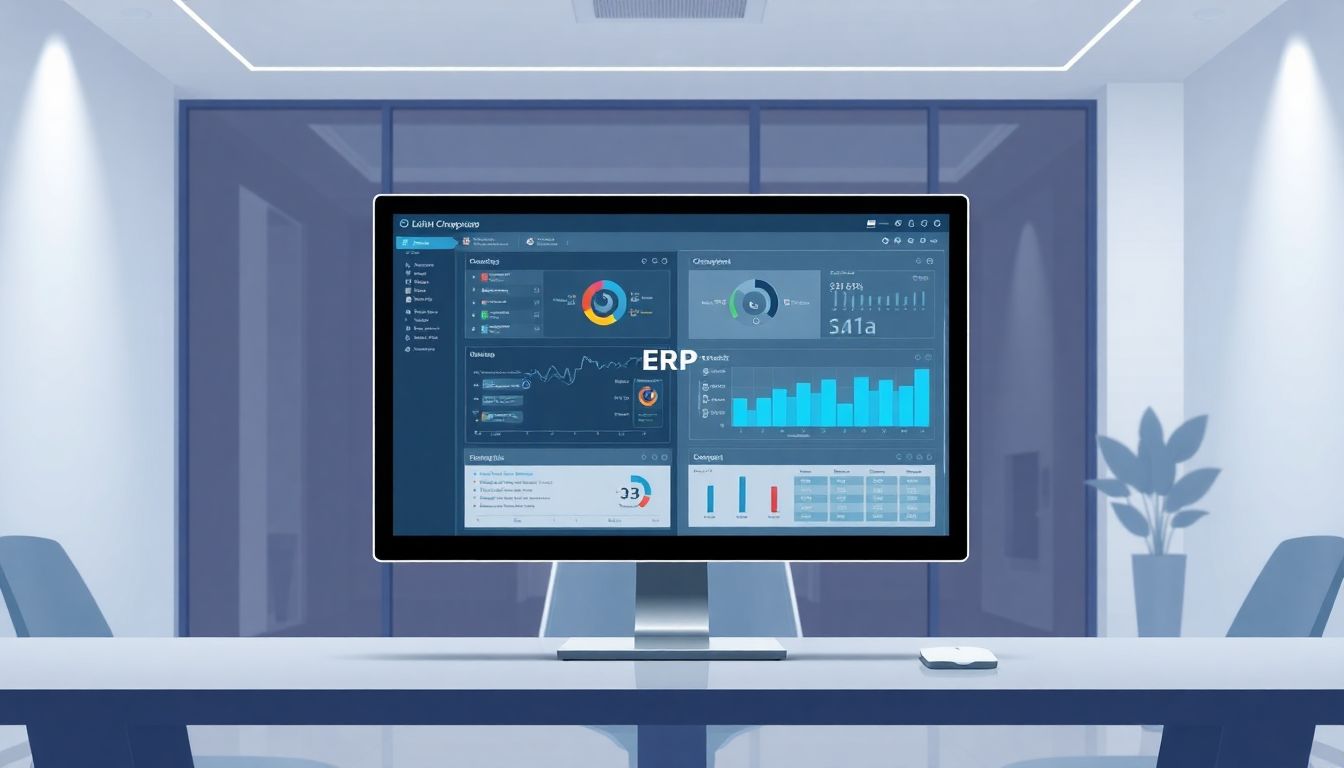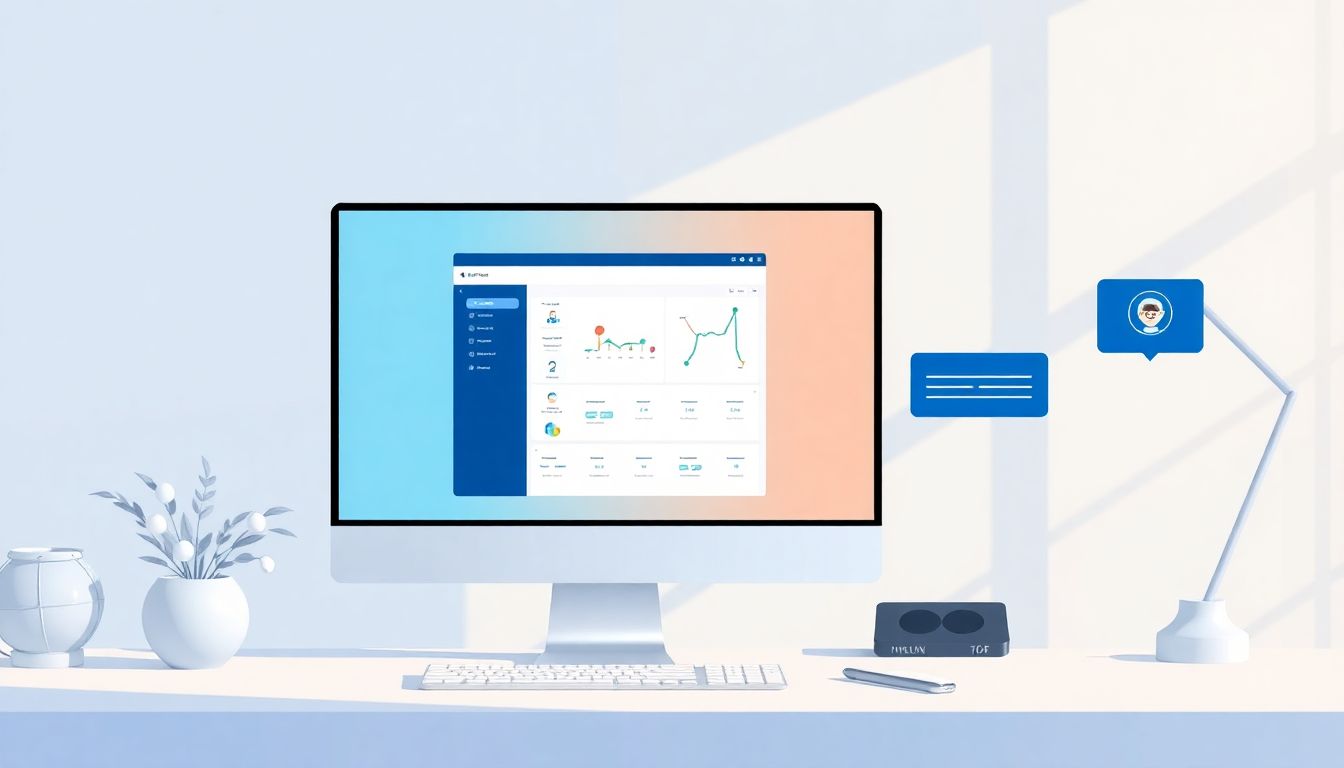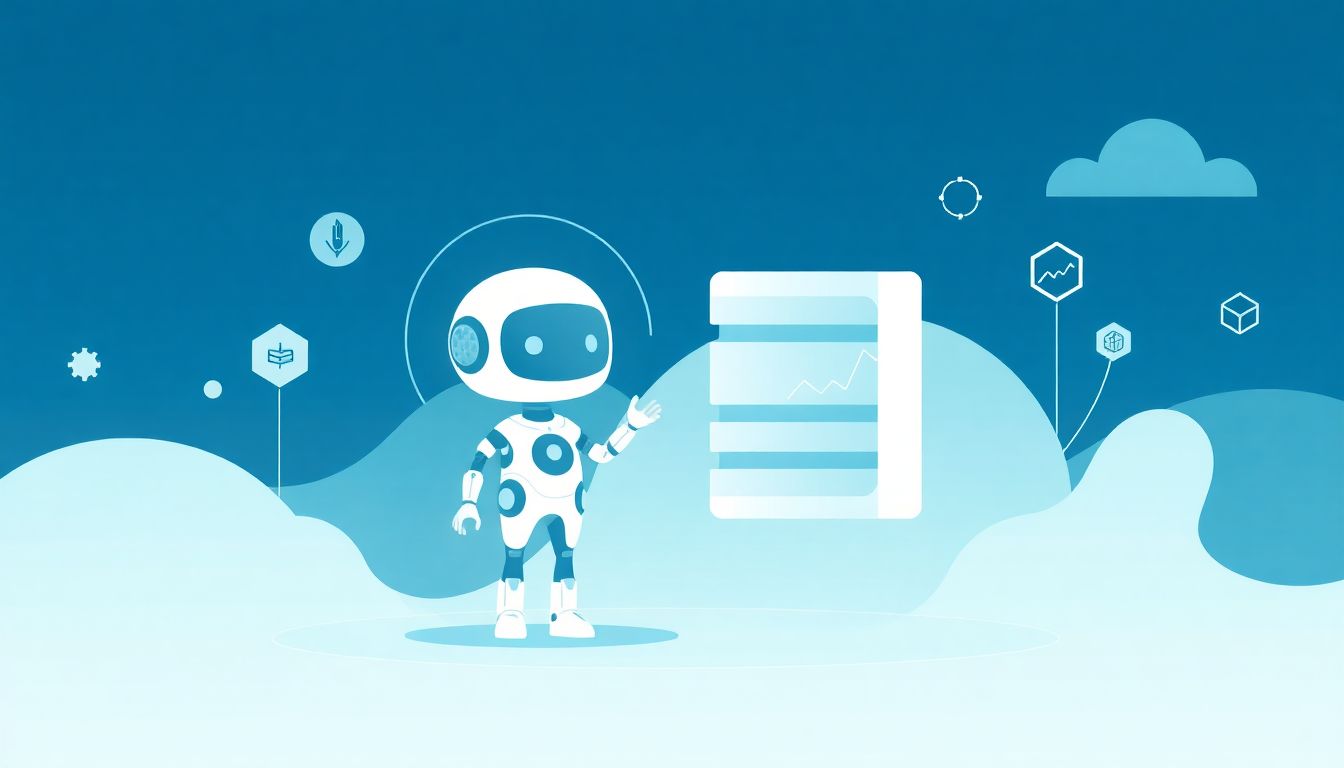Integrating ChatGPT with ERP systems might sound like a daunting task, and you’re not alone if you feel that way. Many businesses wrestle with the complexities of merging cutting-edge AI with traditional enterprise solutions. But hey, what if I told you that this fusion could revolutionize your operations?
Stick around, and I’ll promise to share how this integration isn’t just possible but also beneficial! You’ll discover success stories, learn about the efficiency boosts ChatGPT can provide, and even get tips to navigate the challenges that may arise during integration.
By the end, you’ll have a clear roadmap for leveraging ChatGPT alongside your ERP system, along with insights into the future of this powerful partnership. Let’s dive in!
Key Takeaways
- Integrating ChatGPT with ERP systems can enhance efficiency and streamline workflows.
- Successful examples include automating inventory inquiries in manufacturing and improving customer relationship management in retail.
- Challenges like data compatibility can be addressed through testing and collaboration between IT and end-users.
- Start integration with a clear understanding of business needs and pilot projects to ensure a smooth rollout.
- Benefits include automation, improved decision-making, enhanced user experience, and cost savings.
- Future trends point toward predictive analytics, voice commands, and personalized user experiences in ERP systems.

Successful Integrations of ChatGPT with ERP Systems
ChatGPT is making waves in various sectors, especially when integrated with Enterprise Resource Planning (ERP) systems.
Companies are using ChatGPT to enhance their ERP functionalities, streamlining workflows and automating processes.
One successful integration involves a major manufacturing company that utilized ChatGPT to handle their inventory inquiries.
By automating responses to frequently asked questions regarding stock levels and order statuses, they improved response times and reduced manual workload.
Another case is a retail chain that implemented ChatGPT for customer relationship management through their ERP system.
This allowed real-time assistance for their sales team, enabling them to access customer history and product details swiftly.
These real-life applications of ChatGPT not only showcase its versatility but also highlight its potential to transform traditional ERP solutions.
How ChatGPT Enhances ERP System Efficiency
ChatGPT enhances ERP systems by improving efficiency through automation and real-time processing of data.
One significant way is by reducing response times for queries within the ERP system.
Instead of routing inquiries through multiple channels, employees can get immediate answers directly from ChatGPT.
This not only speeds up decision-making but also frees up valuable human resources for more complex tasks.
For instance, prompt ChatGPT with: “Provide an analysis of our current inventory levels and suggest optimal restocking times.”
This type of command allows ChatGPT to pull relevant data and offer actionable insights based on real-time information.
Additionally, ChatGPT supports better data management by ensuring that information is accessible and straightforward to interpret.
By utilizing natural language processing, it simplifies data queries for users, making it easier to derive insights on sales trends or operational efficiencies.
Real-World Examples of ChatGPT and ERP Collaboration
Examining real-world examples provides a tangible understanding of how ChatGPT can work seamlessly with ERP systems.
A notable example includes a logistics firm using ChatGPT to optimize supply chain management within their ERP framework.
This integration allowed them to predict delivery times and track shipments more effectively.
An additional case is a tech company deploying ChatGPT for HR tasks, such as onboarding and recruitment within their ERP.
By automating candidate screening and answering common queries, they accelerated the hiring process while ensuring a consistent experience.
Users can command ChatGPT in these contexts using prompts like: “Summarize our current recruitment status and recommend potential candidates based on the latest applications.”
These successful integrations illustrate that ChatGPT isn’t just an add-on but a vital component in enhancing the overall utility of ERP systems.
Challenges Faced During Integration and How to Overcome Them
Integrating ChatGPT with ERP systems comes with its own set of challenges that businesses must navigate.
One common issue is data compatibility; existing databases may not be structured in a way that allows for seamless integration.
Another challenge is ensuring that the AI understands industry-specific terminology and processes, which can vary widely.
To overcome these hurdles, companies should focus on thorough testing and iterative feedback loops during the implementation phase.
Encouraging collaboration between IT teams and end-users ensures that the final integration meets the practical needs of the business.
For better preparation, try using the prompt: “Identify potential integration issues between ChatGPT and our ERP system and suggest solutions.”
Addressing these challenges early on can significantly ease the transition and lead to a more successful implementation of ChatGPT with ERP.

Steps to Integrate ChatGPT with Your ERP System
Integrating ChatGPT with your ERP system can be a straightforward process if you follow some structured steps.
First, begin with a clear understanding of your business needs. Define what specific tasks you want ChatGPT to handle within the ERP.
Next, assess your current ERP infrastructure to determine if it’s compatible with AI tools like ChatGPT.
Some ERP systems may require updates or additional API components for seamless integration.
Once you have a clear plan, start with a pilot project. Choose a smaller segment of your operations to test how ChatGPT can serve your team.
Engage your IT team to set up the necessary technical specifications, and focus on training the AI to understand your sector’s terminology.
A good prompt to start with during training is: “Train on company-specific phrases and frequently asked questions related to our ERP functionalities.”
After successful testing, gather feedback from end-users to fine-tune the interactions and improve accuracy.
Finally, roll out the integration across more departments once you’re confident in its performance.
Ensure continuous monitoring and updates to adapt ChatGPT’s responses as your business evolves.
Benefits of Using ChatGPT in ERP Management
Using ChatGPT in ERP management brings a multitude of benefits that can significantly enhance operational efficiency.
For starters, it automates repetitive tasks like responding to common queries, freeing up staff to focus on strategic objectives.
Secondly, ChatGPT improves decision-making by providing data-driven insights quickly.
For example, you can ask: “Analyze last quarter's sales data and suggest actionable strategies.”
This allows you to receive informed recommendations that are tailored to your company’s context.
Another major benefit is the enhancement of user experience. Employees interacting with a responsive and knowledgeable AI can navigate the ERP easier, leading to higher satisfaction.
Moreover, integrating ChatGPT can lead to significant cost reductions by minimizing the manual labor involved in data entry and query handling.
Finally, ChatGPT’s ability to scale alongside your business means it can adapt to increasing user demands without requiring additional personnel.
To fully realize these advantages, consistently train ChatGPT with new data and user feedback to keep its performance at peak levels.
Future Trends in ChatGPT and ERP Integration
The future of ChatGPT and ERP integration looks promising as technological advancements continue to evolve.
One emerging trend is the increasing use of predictive analytics. Businesses will likely rely on ChatGPT to analyze historical data and forecast future trends more accurately.
This can lead to better inventory management and strategic planning, with prompts like: “Provide a forecast of product demand based on past sales trends.”
Another trend is the incorporation of voice-activated commands in ERP systems powered by ChatGPT, which will enhance ease of use.
As more companies adopt remote working practices, mobile integration through ChatGPT will become essential, allowing employees to access ERP functionalities on the go.
AI will also continue to learn from user interactions, becoming more intuitive and responsive over time.
In addition, you can expect more focus on personalized user experiences as ChatGPT tailors responses based on individual roles within the organization.
Staying ahead of these trends will enable businesses to take full advantage of the capabilities offered by ChatGPT in managing their ERP systems.

Challenges Faced During Integration and How to Overcome Them
Integrating ChatGPT with ERP systems comes with its own set of challenges that businesses must navigate.
One common issue is data compatibility; existing databases may not be structured in a way that allows for seamless integration.
Another challenge is ensuring that the AI understands industry-specific terminology and processes, which can vary widely.
To overcome these hurdles, companies should focus on thorough testing and iterative feedback loops during the implementation phase.
Encouraging collaboration between IT teams and end-users ensures that the final integration meets the practical needs of the business.
For better preparation, try using the prompt: “Identify potential integration issues between ChatGPT and our ERP system and suggest solutions.”
Addressing these challenges early on can significantly ease the transition and lead to a more successful implementation of ChatGPT with ERP.
Steps to Integrate ChatGPT with Your ERP System
Integrating ChatGPT with your ERP system can be a straightforward process if you follow some structured steps.
First, begin with a clear understanding of your business needs. Define what specific tasks you want ChatGPT to handle within the ERP.
Next, assess your current ERP infrastructure to determine if it’s compatible with AI tools like ChatGPT.
Some ERP systems may require updates or additional API components for seamless integration.
Once you have a clear plan, start with a pilot project. Choose a smaller segment of your operations to test how ChatGPT can serve your team.
Engage your IT team to set up the necessary technical specifications, and focus on training the AI to understand your sector’s terminology.
A good prompt to start with during training is: “Train on company-specific phrases and frequently asked questions related to our ERP functionalities.”
After successful testing, gather feedback from end-users to fine-tune the interactions and improve accuracy.
Finally, roll out the integration across more departments once you’re confident in its performance.
Ensure continuous monitoring and updates to adapt ChatGPT’s responses as your business evolves.
Benefits of Using ChatGPT in ERP Management
Using ChatGPT in ERP management brings a multitude of benefits that can significantly enhance operational efficiency.
For starters, it automates repetitive tasks like responding to common queries, freeing up staff to focus on strategic objectives.
Secondly, ChatGPT improves decision-making by providing data-driven insights quickly.
For example, you can ask: “Analyze last quarter's sales data and suggest actionable strategies.”
This allows you to receive informed recommendations that are tailored to your company’s context.
Another major benefit is the enhancement of user experience. Employees interacting with a responsive and knowledgeable AI can navigate the ERP easier, leading to higher satisfaction.
Moreover, integrating ChatGPT can lead to significant cost reductions by minimizing the manual labor involved in data entry and query handling.
Finally, ChatGPT’s ability to scale alongside your business means it can adapt to increasing user demands without requiring additional personnel.
To fully realize these advantages, consistently train ChatGPT with new data and user feedback to keep its performance at peak levels.
Future Trends in ChatGPT and ERP Integration
The future of ChatGPT and ERP integration looks promising as technological advancements continue to evolve.
One emerging trend is the increasing use of predictive analytics. Businesses will likely rely on ChatGPT to analyze historical data and forecast future trends more accurately.
This can lead to better inventory management and strategic planning, with prompts like: “Provide a forecast of product demand based on past sales trends.”
Another trend is the incorporation of voice-activated commands in ERP systems powered by ChatGPT, which will enhance ease of use.
As more companies adopt remote working practices, mobile integration through ChatGPT will become essential, allowing employees to access ERP functionalities on the go.
AI will also continue to learn from user interactions, becoming more intuitive and responsive over time.
In addition, you can expect more focus on personalized user experiences as ChatGPT tailors responses based on individual roles within the organization.
Staying ahead of these trends will enable businesses to take full advantage of the capabilities offered by ChatGPT in managing their ERP systems.
FAQs
ChatGPT enhances ERP efficiency by automating routine inquiries, providing real-time data insights, and facilitating decision-making, ultimately reducing response times and increasing user productivity.
Common challenges include data compatibility, ensuring security and privacy, and training personnel to adapt to the new system. Clear planning and phased implementation can help mitigate these issues.
ChatGPT offers benefits such as improved customer support, faster data retrieval, enhanced reporting capabilities, and the ability to deliver personalized user experiences, leading to greater efficiency in ERP management.
Future trends may include deeper AI integrations, greater personalization through machine learning, and enhanced collaboration tools, ultimately leading to smarter, more adaptive ERP systems.
